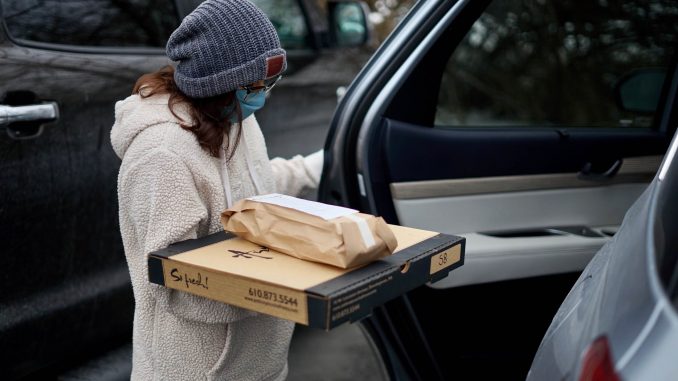
When Alexandra Lichvar lost her job as a lifeguard as a result of the COVID-19 pandemic in April 2020, she went home to Monroe, Connecticut, and started working for Instacart, a popular grocery delivery service, and currently works for DoorDash.
“I needed money to help pay for school and Instacart seemed like the next best thing,” said Lichvar, a junior pharmaceutical sciences major.
Some Temple students became delivery workers during the pandemic either for supplemental income or as a full-time job. Many feel that being a delivery driver is the safest and most effective option to make money but still have pandemic concerns while working.
At the beginning of the pandemic, Lichvar was highly concerned about contracting COVID-19 and would wear a mask and gloves while shopping for Instacart.
“My grocery store, that I typically go to, implemented a lot of COVID restrictions, like one-way aisle movement and separating registers, so I felt a lot more safer in that regard,” she said.
Several food delivery companies, like DoorDash and Instacart, implemented contactless delivery to minimize the spread of COVID-19, CNN reported.
In March 2020, when only essential businesses could operate, many people started using food delivery services to minimize their contact with the public. The number of food delivery app users grew from 36.4 million in 2019 to 45.6 million in 2020, according to Statista, a database and research center.
Lichvar feels delivery services are good opportunities for students to make money while staying safe, although the base pay varies from place to place.
“Where I shopped in Connecticut, I was making more than enough to justify the risk of COVID,” Lichvar said.
Delivery drivers are considered independent contractors, more commonly known as gig workers, and are not traditional employees. They do not have guaranteed minimum earnings and were not eligible for unemployment insurance until the passage of the CARES Act on March 27, 2020, according to CNBC.
“I consider using workers as independent contractors who get paid close to minimum wage exploitative in normal times, so I found the use of workers during a pandemic at the same wage to be worse,” said Joey Lynch, a junior statistical science and data analytics major.
Sonya Paroya, a junior psychology major, has been working for DoorDash for two years and feels gig companies need to do better for their workers since the company exercises a great deal of control over their workers.
“By classifying us as independent, we can’t get employee benefits such as paid sick leave, minimum and overtime wages, insurance and business expense reimbursements for things like gas,” Paroya wrote in an email to the Temple News.
In California, DoorDash and rideshare services fought to keep their workers classified as independent contractors and are trying to influence other state legislatures to move in the same direction, CNBC reported. A new proposition would save the companies money keeping employees as independent contractors, but would require them to offer more benefits and guarantee minimum earnings for them.
Lynch, who lives with his parents who are vulnerable to COVID-19, felt it was safer to work as a delivery driver than at a grocery store. Yet, the supermarkets were always full and social distancing practices were not always followed, he said.
Lynch had to work regardless to pay for tuition and rent, despite not feeling completely comfortable with his safety while working, he said.
“I didn’t feel I had a choice but to expose myself to what was going on because I needed to make money,” he added.


Be the first to comment